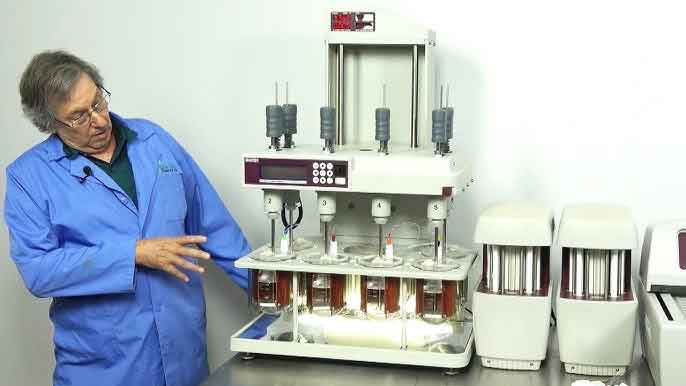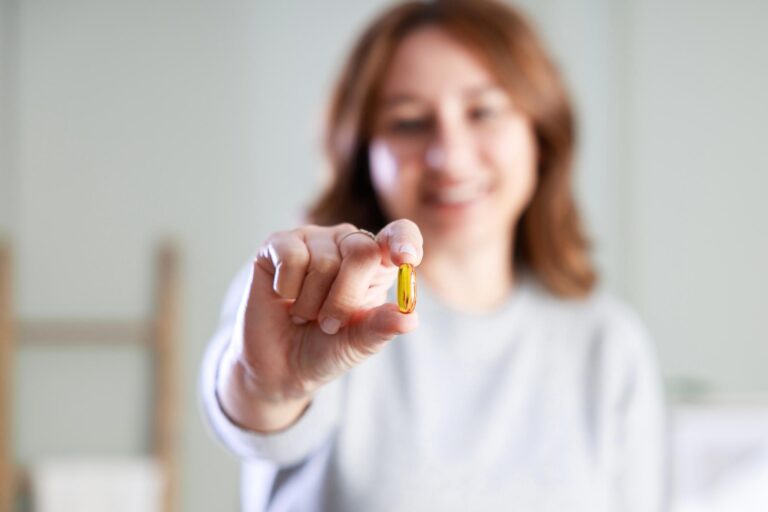
Utilizing strategies that conserve active pharmaceutical ingredient (API) quantities and pinpointing scalable formulation technologies suitable for boosting drug solubility and augmenting oral bioavailability can significantly enhance the likelihood of success during the transition from preclinical development to the early phases of clinical trials.
Introduction
The pharmaceutical landscape recognizes that only a fraction of candidate compounds makes it to market, necessitating the evaluation of numerous options for potential therapeutic efficacy. Given the preference for oral administration, tools have emerged to guide the formulation development of orally delivered drugs. Among these tools is the refined Developability Classification System (rDCS), introduced by Rosenberger, Butler, and Dressman in 2018. This system aids formulators in the preclinical stage by identifying optimal formulation strategies that are more likely to result in favorable oral bioavailability in human subjects. However, early-stage formulation work often contends with the challenge of limited drug substance quantities. To overcome this constraint, Hycon leverages in-vitro screening techniques to recommend well-suited formulation strategies that demand minimal amounts of the drug substance.
Introduction to rDCS:
While the Biopharmaceutics Classification System (BCS), introduced in 1995, has played a role in guiding drug development, it primarily serves as a regulatory tool for classifying drugs based on solubility and dissolution rate (2). In contrast, the Developability Classification System (DCS), specifically the refined version (rDCS), proposed by Rosenberger et al., offers a more nuanced approach. Introduced in 2018, the rDCS accounts for factors beyond solubility and dissolution rate, including permeability, metabolism, and potential drug interactions.
The rDCS categorizes compounds into four classes:
Class I: Characterized by high permeability and solubility, compounds in this class hold promise for successful oral formulation. Class II: Compounds with high permeability but low solubility face challenges due to limited bioavailability. Strategies like amorphous solid dispersions or lipid-based formulations are relevant for this category.
Class III: Compounds with low permeability but high solubility can benefit from permeability-enhancing techniques, such as prodrugs or permeation enhancers.
Class IV: Compounds with low permeability and solubility present a dual challenge, often requiring extensive formulation efforts or alternative administration routes.
To address the scarcity of drug substances in early stages, API-sparing development techniques are essential. These techniques optimize resource usage by minimizing the amount of API needed for testing and experimentation. In-vitro screening tools play a pivotal role in suggesting formulation approaches to improve oral bioavailability without excessive consumption of the drug substance. Simultaneously, the choice of an appropriate scalable formulation technology is vital to tackle solubility-related concerns.
Effective methods include:
Amorphous Solid Dispersions: By dispersing the drug in a polymer matrix, solubility can be significantly improved, facilitating enhanced dissolution.
Lipid-Based Formulations: These formulations leverage natural lipid absorption processes to enhance solubility and bioavailability. Nanoformulations: Nanotechnology-driven approaches, involving reduced particle size, increase drug surface area for better solubility. Cyclodextrin Complexation: Cyclodextrins encapsulate hydrophobic drugs, enhancing solubility and stability.
Salt Formation: Converting drugs into salt forms can alter physicochemical properties, including solubility.
Co-Crystals: Co-crystals modify solubility characteristics through crystalline structures formed with co-formers. Human pharmacokinetics, permeability, and dissolution behavior. However, the rDCS takes a step further and suggests using dosage ranges (5, 50, and 500 mg) in cases when the human dose hasn’t been determined. The capacity of the rDCS to customize research for substances with special properties is arguably where it differs the most from its forebears. This is especially true for weak bases and weak acid salts, where the rDCS provides more thorough insights than the traditional studies. Table 1 gives a summary of these differences. The usual studies include a thorough examination to provide early and, in many cases, final evaluations of drug developability. These analyses are based on variables including the dosage range, solubility, behavior during dissolution, permeability, and human pharmacokinetics. Though, the context of permeability. When the predefined criteria from the standard investigations are satisfied, it prompts the initiation of customized investigations. These specialized investigations encompass small-scale dissolution experiments as well as supersaturation or precipitation experiments on a reduced scale, as detailed in the literature.
Numerous case histories stand as illustrative examples, showcasing the efficacy and value of the rDCS in accurately classifying compounds. This particularly holds true for scenarios where compounds possess unique characteristics or challenges. The rDCS’s ability to provide tailored recommendations through customized investigations proves instrumental in making informed decisions and formulating effective strategies for these compounds.
To span a range of doses or to visualize the influence of distinct formulations on the potential success of a marketable product, the rDCS analysis proves invaluable. An application of the rDCS analysis was executed on the well-known antiviral compound, acyclovir—an ampholytic agent. This analysis utilized existing literature data concerning solubility and permeability.
In the course of the standard investigation process, the upper boundary of the dose spectrum was set at 800 mg, mirroring the highest single administered dose. Notably, for acyclovir, the rDCS classification unveiled itself as follows: for the 5-mg and 50-mg dosages, the compound fell under class III (exhibiting good solubility but poor permeability). However, for the substantial 800-mg dose, a class IV classification emerged (indicating both poor solubility and permeability).
If this had pertained to an investigational compound, the development team would have gleaned a crucial insight from the rDCS classification. It would have highlighted the necessity for an approach aimed at enhancing the compound’s permeability to bolster its bioavailability. One such strategic maneuver involves creating a prodrug derived from the original molecule. In the specific case of acyclovir, the introduction of valine conjugation to generate valacyclovir proved to be a fruitful tactic. The resultant valacyclovir displayed improved permeability, owing to its compatibility with amino acid transporters.
This case exemplifies the actionable intelligence that the rDCS can offer, steering development teams towards successful strategies for compounds with specific challenges, and inspiring inventive pathways to elevate bioavailability, such as prodrug creation.
DEVELOPMENT OF OPTIMAL ORAL FORMULATIONS
The early stages of drug development can be categorized into three main phases: identification of the appropriate disease target, creation of molecules that effectively interact with the chosen target, and the development of suitable dosage forms. While formulation experts play a relatively minor role in the disease targeting phase, their involvement becomes crucial during candidate selection to ensure that the chosen molecule is well-suited for progression to subsequent development stages.
Upon the selection of a candidate molecule, the formulation team’s engagement becomes pivotal throughout the development journey. Their role involves ensuring that the formulation and dosage form are not only tailored to the intended purpose but also capable of addressing the molecule’s specific physicochemical challenges.
In the context of these drug candidates’ typically limited quantities, Hycon employs in-vitro screening tools as an effective strategy to minimize the consumption of active pharmaceutical ingredients (API) during the developmental process. These tools serve to streamline and optimize the formulation development of ideal oral formulations. By judiciously managing API consumption, researchers can make efficient use of available resources while simultaneously refining the formulation to achieve desired outcomes.
During the transition from early-stage development to subsequent phases, prototype formulations become essential for animals and phase 1 studies. In addition, more sophisticated techniques like physiologically based pharmacokinetic (PBPK) modeling can be employed to proactively identify and address potential absorption challenges. This process commences with in-silico modeling to compare different molecules based solely on their structures. Subsequently, Pharmacokinetic (PK) data from animal studies is incorporated to compare prototype dosage forms, eventually leading to predictions in humans through advanced modeling techniques.
For poorly soluble drug substances with known physical properties, Hycon offers a range of techniques designed to enhance bioavailability. These techniques encompass spray-dried dispersions, lipid-based drug delivery systems, particle size reduction, and hot melt extrusion (HME). Notably, the first two techniques are API-sparing and provide a swift avenue for formulating prototypes suitable for use in proof-of-concept studies.
As the development of the compound advances toward the clinical stage, a pivotal shift occurs in focus toward patient-centric considerations. This involves optimizing dosage form design to align with the needs of the patient population. Key aspects encompass the ease of administration, dosing regimen, and overall patient experience. The formulation should be carefully crafted to facilitate patient compliance, ensuring that the therapeutic benefits are realized while minimizing any potential barriers or challenges that patients might face during treatment.
Addressing these challenges required a multifaceted approach. This included the exploration of additional polymers capable of acting as crystallization inhibitors, the evaluation of the suitability of the hot melt extrusion manufacturing process, and the careful consideration of dosage-form development expenses concerning the feasibility of dosing the API more frequently at a lower dose during the ongoing developmental stage.
Although the process of screening polymers failed to identify novel crystallization inhibitors, a polymer capable of augmenting the equilibrium solubility was successfully identified. Notably, hot melt extrusion (HME) emerged as a viable manufacturing avenue for subsequent studies, indicating its potential in overcoming formulation hurdles.
Utilizing the newly identified polymer, a meticulous optimization of the spray drying process was undertaken. This endeavor aimed to craft a formulation capable of attaining the targeted exposure levels through dosing the compound 2–3 times daily at a reduced dosage.
This case study serves as a reminder that in the realm of formulation development, constraints related to time and budget can occasionally present limitations. In certain instances, it might be challenging to fully resolve all encountered issues. Consequently, a pragmatic approach might involve progressing with a solution that sufficiently meets the immediate requirements. This approach acknowledges that while the solution might not be perfect, it still effectively caters to the immediate needs. It’s worth considering revisiting and refining the formulation once more information is obtained about the molecule’s potential for advancement to the subsequent developmental stage.
Reference
Rosenberger J. et al. (2018). A refined developability classification system, Journal of Pharmaceutical Sciences, 107(8):2020-2032.
Amidon G.L. et al. (1995). A theoretical basis for a biopharmaceutic drug classification: the correlation of in vitro drug product dissolution and in vivo bioavailability. Pharmaceutical Research, 12(3):413-20.
Wuyts B. et al. (2015). Evaluation of fasted state human intestinal fluid as apical solvent system in the Caco-2 absorption model and comparison with FaSSIF. European Journal of Pharmaceutical Sciences, 67:126-135. Rosenberger J. et al. (2019). Application of a Refined Developability Classification System, Journal of Pharmaceutical Sciences, 108(3):1090-1100.







